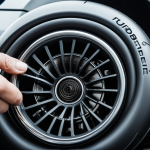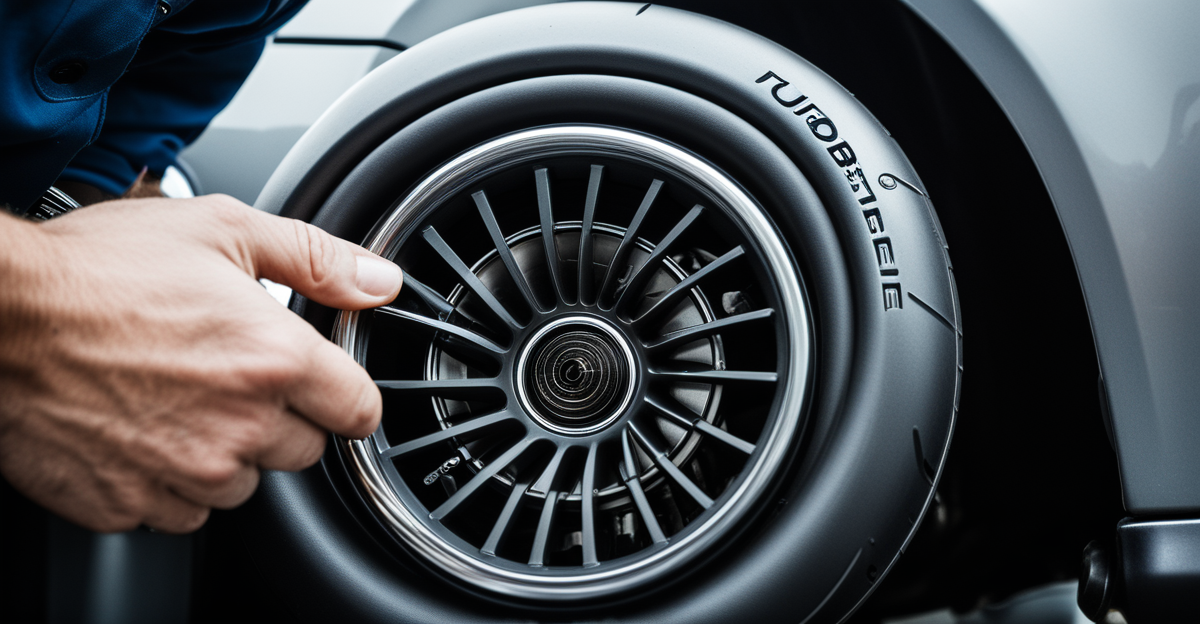Understanding Turbocharger System Fundamentals
A turbocharger fundamentally boosts engine power by forcing extra air into the combustion chamber, enabling more fuel to burn efficiently. This results in increased vehicle performance and better fuel economy. The core of turbocharger basics lies in understanding its main components: the turbine, compressor, and center housing. The turbine, powered by exhaust gases, spins the compressor which compresses the intake air before it enters the engine.
Each component plays a crucial role in the turbocharger function. The turbine harnesses energy from exhaust flow, while the compressor increases air density. Between them, the center housing facilitates lubrication and cooling, preventing excessive wear and maintaining system longevity. Together, these turbo system components improve engine responsiveness and power without increasing engine size.
Topic to read : Essential Tips for Protecting Your Electronics When Transporting Vehicles
By enhancing air intake efficiency, turbochargers optimize combustion, leading to higher power output and reduced emissions. This system effectively boosts both performance and fuel efficiency, making turbos a popular choice in modern vehicles seeking to balance power and economy. Understanding these fundamentals clarifies why proper maintenance and system checks are essential to sustain turbocharger reliability and maximize vehicle benefits.
Routine Turbocharger Inspection and Key Maintenance Checks
Regular turbocharger inspection is crucial for detecting issues before they impair performance or cause damage. A thorough maintenance checklist focuses on visual and functional aspects to ensure the turbocharger operates smoothly. Key areas to inspect include the turbine and compressor wheels for physical damage, oil leaks around the center housing, and unusual shaft play. Checking for exhaust leaks and intake air restrictions also forms part of routine checks.
Also to discover : Complete Handbook for Securely Installing Your Roof-Mounted Bike Rack: Essential Tips for a Safe Setup
A practical routine check begins with examining the condition of turbo blades. Damaged or chipped blades reduce efficiency and can escalate wear. Next, the turbo’s shaft should be tested for excessive movement which might indicate bearing wear. Signs of oil leakage around seals hint at lubrication system issues that require immediate attention to prevent turbo failure. Listening for abnormal noises such as whining or rattling during engine operation is another diagnostic step.
Turbocharger diagnostics extend beyond visual cues. Performance indicators like loss of boost pressure or increased smoke emissions warrant a detailed inspection. Using pressure gauges can help determine if the turbo delivers expected airflow. Additionally, oil quality and supply must be verified regularly, as contaminants or insufficient lubrication harm the bearings and reduce the turbocharger’s lifespan. Adhering to a structured inspection routine helps maintain optimal vehicle performance and prevents costly repairs.
Essential Cleaning and Care for Prolonged Turbo Life
Maintaining a turbocharger’s longevity depends significantly on effective turbocharger cleaning and dedicated care tips. Keeping the turbocharger free from contaminants ensures the turbo system components—particularly the turbine and compressor—operate efficiently without premature wear. Over time, deposits from combustion by-products and dirt can accumulate on the blades and housing, which hinders performance and may lead to imbalance or damage.
Proper cleaning techniques involve gentle removal of debris without damaging sensitive parts. Using approved cleaning products designed specifically for turbo components prevents corrosion and residue buildup. Avoid harsh chemicals that strip protective coatings or degrade seals. Regularly inspecting and cleaning the air filter and intake system complements this by minimizing the entry of contaminants, thus preventing debris prevention at the source.
Lubrication is another critical factor in turbocharger care. The turbocharger relies on a steady supply of clean, high-quality oil to lubricate the shaft and bearings within the center housing. Insufficient or contaminated oil leads to increased friction and heat, accelerating wear and risking failure. Replacing oil at recommended intervals and using manufacturer-recommended lubricants ensures optimal viscosity and contaminant control.
In summary, sustained turbocharger cleaning coupled with diligent lubrication and prevention of dirt ingress are essential for maintaining peak vehicle performance and extending turbo life. Following these care practices limits the risks of costly repairs and preserves the turbocharger’s efficiency.
Common Turbocharger Problems and Troubleshooting Solutions
Identifying turbocharger issues early is vital to maintain vehicle performance and prevent costly repairs. Common failure symptoms include loss of boost pressure, excessive smoke from the exhaust, and unusual engine noises such as whining or rattling. These signs often point to specific underlying causes like damaged turbine blades, worn bearings, or oil supply problems within the turbo system components.
When facing low boost pressure, the primary troubleshooting step is to check for leaks in the intake and exhaust systems. Cracks or loose connections can allow air to escape, reducing compressor efficiency. Inspecting the turbine and compressor wheels for physical damage or obstruction is equally important, as chipped or bent blades degrade the turbocharger function. If the turbo shaft exhibits excessive play during manual checks, bearing wear is likely, necessitating component replacement.
Excessive smoke often signals oil seal failure, where oil leaks into the combustion chamber due to worn seals or poor lubrication. Verifying oil quality and flow helps determine if oil contamination or starvation contributes to turbo failure. Noise abnormalities such as whining can stem from bearing damage or imbalance in the rotor assembly, both requiring immediate attention.
A structured approach to troubleshooting includes:
- Visual inspections for damage or leaks
- Measuring boost pressure levels
- Testing shaft play and shaft seal integrity
- Assessing oil condition and supply
Addressing these issues promptly ensures the turbocharger system can sustain optimal operation and extend its service life. Effective troubleshooting safeguards against escalating damage and supports consistent engine performance.
Turbocharger Maintenance Schedule and Best Practices
Establishing a maintenance schedule is key to preserving turbocharger health and sustaining vehicle performance. Routine service intervals should align with manufacturer recommendations, typically every 10,000 to 15,000 miles, depending on driving conditions and engine type. Regular checks and preventive actions reduce wear and avert major failures.
A comprehensive turbocharger checklist during scheduled maintenance includes inspecting the turbine and compressor wheels for damage, assessing shaft play, examining oil seals for leaks, and verifying proper oil quality and flow. These inspections detect early signs of deterioration, enabling timely repairs.
Best practices for turbo upkeep emphasize consistent oil changes using manufacturer-approved lubricants, as oil quality directly impacts the turbocharger function. Additionally, allowing the engine to idle briefly after heavy throttle use cools the turbo, preventing thermal stress on turbo system components.
Preventative care also involves keeping the air intake and filtration systems clean, as debris can cause imbalance and damage. Adhering to this maintenance schedule and best practices supports long-term turbo efficiency, enhances power delivery, and lowers the risk of costly repairs.
Recommended Products and Tools for Turbocharger Maintenance
Choosing the right turbocharger products and maintenance tools significantly impacts the effectiveness of your care routine and the longevity of your turbo system components. For turbocharger cleaning, specialized cleaning products formulated to remove carbon deposits and dirt without harming delicate turbine and compressor blades are essential. These cleaning solutions preserve the integrity of seals and coatings, preventing corrosion and buildup that can degrade turbocharger function.
When selecting fluids, using high-quality, manufacturer-recommended lubricants is critical. These oils ensure optimal viscosity and protection under extreme temperature and pressure conditions within the turbocharger’s center housing. Proper lubrication reduces friction and wear on the shaft and bearings, enhancing overall reliability and maintaining vehicle performance.
Effective maintenance requires the correct tools as well. A reliable turbocharger maintenance toolkit typically includes pressure gauges for precise boost pressure diagnostics, feeler gauges for measuring shaft play, and inspection scopes to visually examine internal components without disassembly. Additionally, clean and sturdy brushes or air compressors help safely remove debris during cleaning without damaging sensitive parts.
Using trusted turbocharger products and tools allows you to perform thorough inspections, cleaning, and lubrication efficiently and safely. This approach supports preventative maintenance efforts and helps avoid costly repairs, ensuring your turbocharger consistently delivers peak performance.
Expert Advice and Frequently Asked Questions
Gain valuable expert turbocharger tips to extend your turbo’s life and ensure consistent vehicle performance. Professionals emphasize the importance of adhering strictly to your vehicle’s service intervals and using manufacturer-approved lubricants. Proper oil quality and quantity are paramount since the turbocharger function depends heavily on effective lubrication to prevent bearing failure and overheating.
FAQs often concern when to perform routine turbocharger inspection and how to spot early warning signs. Experts recommend checking turbo shaft play at every oil change and watching for oil leaks or unusual exhaust smoke. Early detection of issues like chipped blades or boost pressure loss reduces repair costs and downtime. For DIY enthusiasts, applying careful cleaning methods with the right cleaning products and tools preserves turbo efficiency without risking damage.
Maintenance advice also highlights the benefit of gradual engine cooldowns after heavy driving to avoid thermal stress. Frequent inspection of the air intake system prevents debris accumulation that could harm turbo system components. Experts suggest a balanced approach combining scheduled professional servicing and informed DIY care for best results.
In summary:
- Use high-quality oil and change it regularly
- Check shaft play and leaks during routine turbocharger inspection
- Detect early symptoms like boost loss or smoke promptly
- Clean with recommended products and avoid harsh chemicals
- Allow engine cooldown to protect turbo components
Following these maintenance advice points supports reliable turbo operation and optimizes long-term vehicle performance.








